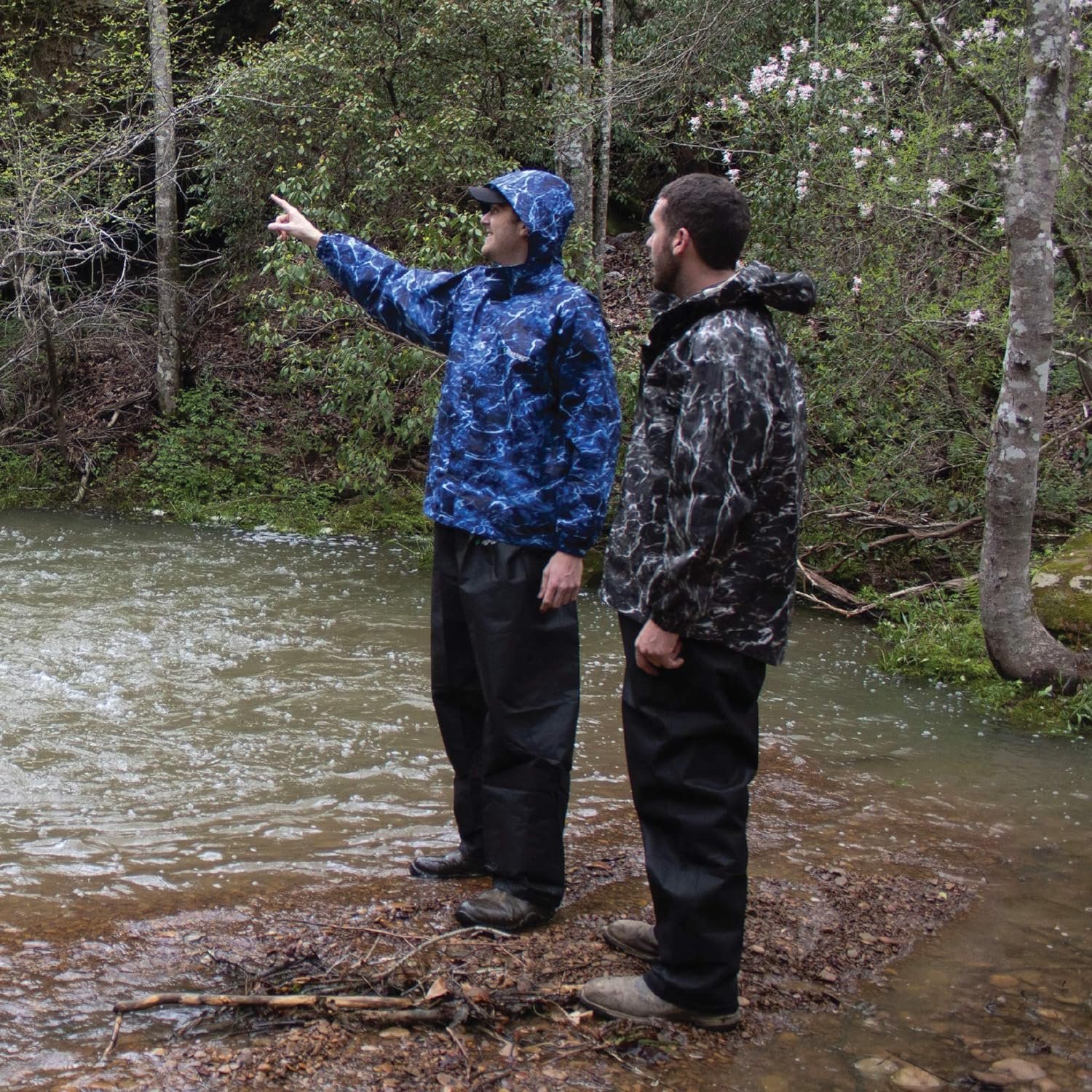If you’re planning a trip to New Brunswick, Canada, it’s only natural to wonder just how cold it gets there. Well, let us put your mind at ease and give you the rundown. New Brunswick experiences some seriously chilly temperatures, particularly during the winter months. The coldest it gets in this eastern province can dip well below freezing, with average lows ranging from -15°C to -20°C (5°F to -4°F). So make sure to pack your warmest coat and bundle up when venturing out into the beautiful landscapes of New Brunswick.
What Is The Coldest It Gets In New Brunswick?
Table of Contents
New Brunswick’s Climate
New Brunswick is a beautiful province located on the eastern coast of Canada. Its climate is influenced by its proximity to the Atlantic Ocean and the surrounding geographical features. In this article, we will explore New Brunswick’s climate, focusing on its seasonal variations, average temperatures, extreme cold snaps, wind chill factors, and factors influencing cold temperatures. We will also discuss historical climate data and its effects on daily life. So, let’s dive in!
Overview of New Brunswick’s climate
New Brunswick experiences a humid continental climate, which means that it has warm summers and cold winters. The province is known for its diverse weather patterns and sometimes unpredictable changes in temperature. It is not uncommon to experience sunny and warm days followed by sudden drops in temperature and snowfall. This variability adds to the charm and excitement of living in or visiting New Brunswick.
Seasonal variations in temperature
New Brunswick has distinct seasons, each offering unique experiences for residents and tourists alike. In the summer months of June to August, temperatures can reach highs of around 25 to 30 degrees Celsius (77 to 86 degrees Fahrenheit). Summers in New Brunswick are generally pleasant, with plenty of sunshine and opportunities for outdoor activities such as hiking, camping, and swimming in the numerous lakes and rivers.
As the seasons transition into fall, temperatures gradually start to drop, creating a spectacular display of vibrant foliage. Fall temperatures range from mild to cool, with highs averaging around 12 to 15 degrees Celsius (54 to 59 degrees Fahrenheit). This is a popular time for visitors to explore New Brunswick’s national parks and take in the breathtaking beauty of the changing leaves.
Winter in New Brunswick can be quite cold, with temperatures dropping significantly. It is during this season that the province experiences some of its most extreme cold snaps. We will delve deeper into the coldest months in New Brunswick in the next section.
Coldest months in New Brunswick
The coldest months in New Brunswick are typically December to February. During this period, temperatures can plummet below freezing, with average lows ranging from -10 to -20 degrees Celsius (14 to -4 degrees Fahrenheit). It is not uncommon for cold snaps to bring temperatures even lower, reaching record lows that everyone in the province feels.
Average Annual Temperature
General temperature range
The average annual temperature in New Brunswick varies depending on the region. In general, the province experiences a cool climate, with average highs ranging from 6 to 7 degrees Celsius (43 to 45 degrees Fahrenheit) and average lows ranging from -3 to -5 degrees Celsius (26 to 23 degrees Fahrenheit). These temperatures give New Brunswick its distinct seasons and contribute to the beauty of the landscape.
Record low temperatures in New Brunswick
New Brunswick has seen its fair share of record low temperatures. Some of the most extreme temperatures registered in the province include -46.7 degrees Celsius (-52.1 degrees Fahrenheit) in Sisson Dam on January 31, 1955, and -47.2 degrees Celsius (-53 degrees Fahrenheit) in Edmundston on February 5, 1925. These bone-chilling temperatures serve as a testament to the resilience of the people who call New Brunswick home.
Winter Temperatures
Average winter temperatures in New Brunswick
Winter in New Brunswick can be quite harsh, with average temperatures dropping significantly. During the winter months, average highs range from -6 to -1 degrees Celsius (21 to 30 degrees Fahrenheit), while average lows range from -14 to -10 degrees Celsius (7 to 14 degrees Fahrenheit). These chilly temperatures create a winter wonderland, with opportunities for outdoor activities such as skiing, ice skating, and snowshoeing.
Typical winter weather patterns
New Brunswick experiences a variety of winter weather patterns, including snowstorms, blizzards, and freezing rain. The province is well-equipped to handle these weather conditions, with snow plows and salt trucks working diligently to keep the roads safe and accessible. It is important to stay updated on weather forecasts and road conditions during the winter months to ensure a safe and enjoyable experience.
Extreme Cold Snaps
Occurrences of extreme cold snaps
Extreme cold snaps are not uncommon in New Brunswick, especially during the winter months. These are periods of unusually cold weather where temperatures can drop significantly below freezing. Cold snaps can last for several days or even weeks, causing disruptions to daily life and posing risks to health and safety.
Impacts of extreme cold on daily life
Extreme cold can have a significant impact on daily life in New Brunswick. It can lead to issues such as frozen pipes, reduced visibility on the roads, difficulty starting vehicles, and increased health risks. Schools and businesses may also close during severe cold snaps to ensure the safety and well-being of individuals.
Precautions during extreme cold
During extreme cold snaps, it is crucial to take precautions to protect yourself and your loved ones. Dressing in layers, wearing a hat and gloves, and covering exposed skin can help prevent frostbite and hypothermia. It is also important to stay hydrated, as cold air can be drying. Additionally, checking on vulnerable individuals, such as the elderly and those without proper heating, is essential to ensure their well-being during extreme cold.
Wind Chill Factors
Understanding wind chill
The wind chill factor takes into account how wind speed affects the perceived temperature by the human body. As wind blows across our skin, it removes heat faster, making us feel colder than the actual temperature. The wind chill factor is especially relevant during the winter months when cold air and strong winds combine to create bitter conditions.
Effects of wind chill on temperatures
When the wind chill factor is factored in, the temperature can feel significantly colder than what the thermometer shows. For example, a temperature of -10 degrees Celsius (14 degrees Fahrenheit) with a wind speed of 40 km/h (25 mph) can feel like -20 degrees Celsius (-4 degrees Fahrenheit). This emphasizes the importance of dressing appropriately and taking additional precautions during windy conditions.
Winter weather advisories
In New Brunswick, winter weather advisories are issued when conditions pose a potential threat to individuals’ safety. These advisories provide important information about expected weather conditions, including wind chill factors, snowfall, and visibility. It is crucial to stay informed about these advisories and take appropriate action to stay safe during severe winter weather.
Coldest Regions in New Brunswick
Overview of New Brunswick regions
New Brunswick is divided into several regions, each with its own unique characteristics and climate. These regions include the Acadian Peninsula, the North Shore, the Fundy Coast, the River Valley, and the Appalachian Range. The varying geography and proximity to bodies of water contribute to the differences in temperature among these regions.
Regions with consistently low temperatures
Certain regions in New Brunswick tend to have consistently lower temperatures throughout the year. Areas in the northern part of the province, such as Edmundston and Campbellton, experience colder temperatures compared to the southern regions. The Appalachian Range, located in the southwest of the province, also sees cooler temperatures due to its elevation.
Factors Influencing Cold Temperatures
Geographical factors
New Brunswick’s geographical location plays a significant role in the cold temperatures experienced in the province. It is located in the northeastern part of North America, with the Atlantic Ocean to the east and the Appalachian Mountains to the southwest. The ocean’s influence brings moisture and moderates temperatures, while the mountains can act as a barrier and influence weather patterns.
Climate systems affecting New Brunswick
New Brunswick’s climate is influenced by several climate systems, including the Arctic air masses, the Gulf Stream, and the North Atlantic Oscillation. Arctic air masses can push southward, bringing frigid temperatures to the province. The Gulf Stream, a warm ocean current, helps to moderate temperatures along the coast. The North Atlantic Oscillation affects the strength and frequency of storms, contributing to weather variability in New Brunswick.
Historical Climate Data
Analysis of historical temperature records
Analyzing historical temperature records provides valuable insights into New Brunswick’s climate patterns over the years. By studying long-term trends, scientists and meteorologists can better understand climate change and its effects on the province. Historical climate data also helps to identify record-breaking temperatures and extreme weather events.
Long-term climate trends in New Brunswick
Long-term climate trends in New Brunswick indicate a warming trend over the past century. While the province still experiences cold winters, the overall temperature has increased. This has led to changes in precipitation patterns, snowfall amounts, and freeze-thaw cycles. These trends highlight the importance of monitoring and adapting to climate change in order to mitigate its impact on the environment and daily life.
Effects on Daily Life
Impact on outdoor activities
New Brunswick’s climate, with its range of temperatures and weather patterns, has both positive and negative impacts on outdoor activities. Summers provide ample opportunities for swimming, fishing, hiking, and exploring the province’s natural beauty. Winter activities such as skiing, snowboarding, and snowmobiling attract enthusiasts from near and far. However, extreme cold snaps and severe weather conditions can temporarily halt these activities, requiring residents and visitors to be flexible and plan accordingly.
Health considerations during extreme cold
Extreme cold can pose health risks, particularly for vulnerable populations, such as the elderly, children, and individuals with chronic medical conditions. It is important to take precautions during extreme cold, such as staying indoors, dressing warmly, and ensuring proper heating in homes. Being aware of the signs of frostbite and hypothermia and seeking medical attention if necessary is crucial in protecting one’s health and well-being during cold weather.
Book Your Trip to New Brunswick
Encouraging readers to plan their visit
After learning about New Brunswick’s climate, it is hard not to be enticed to experience it firsthand. Whether you are a nature lover, an outdoor enthusiast, or simply seeking a change of scenery, New Brunswick has something to offer. From stunning landscapes and charming coastal towns to vibrant cities and rich cultural heritage, there is no shortage of experiences to be had.
Promoting New Brunswick tourism
Imagine strolling along the picturesque beaches of Fundy National Park, exploring the historic streets of Saint John, or spotting wildlife in Kouchibouguac National Park. These are just a few of the many attractions New Brunswick has to offer. So why not start planning your trip today? Book your travel arrangements, pack your bags, and get ready to embark on an unforgettable adventure in New Brunswick.
In conclusion, New Brunswick’s climate is diverse, with distinct seasons and varying temperatures throughout the year. From warm summers to cold winters, the province offers a range of weather patterns that contribute to its unique charm. While extreme cold and wind chill factors can pose challenges, New Brunswickers have learned to adapt and find enjoyment in the beauty of their surroundings. So, whether you’re a local or a visitor, New Brunswick invites you to embrace its climate and make memories to last a lifetime.



